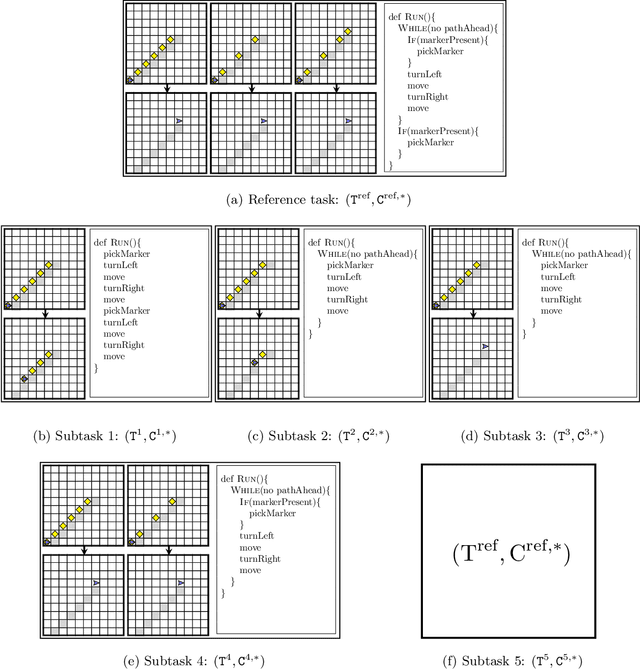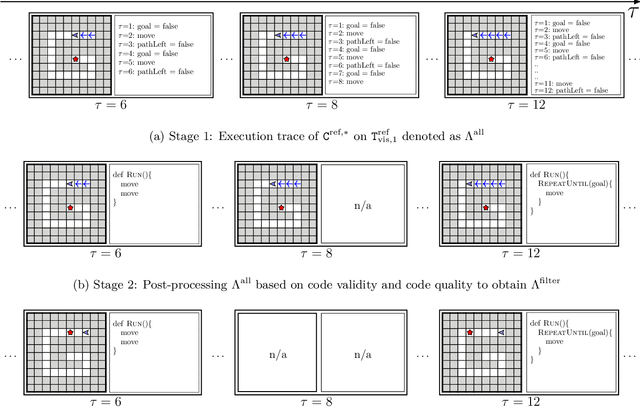Synthesizing a Progression of Subtasks for Block-Based Visual Programming Tasks
Paper and Code
May 27, 2023



Block-based visual programming environments play an increasingly important role in introducing computing concepts to K-12 students. In recent years, they have also gained popularity in neuro-symbolic AI, serving as a benchmark to evaluate general problem-solving and logical reasoning skills. The open-ended and conceptual nature of these visual programming tasks make them challenging, both for state-of-the-art AI agents as well as for novice programmers. A natural approach to providing assistance for problem-solving is breaking down a complex task into a progression of simpler subtasks; however, this is not trivial given that the solution codes are typically nested and have non-linear execution behavior. In this paper, we formalize the problem of synthesizing such a progression for a given reference block-based visual programming task. We propose a novel synthesis algorithm that generates a progression of subtasks that are high-quality, well-spaced in terms of their complexity, and solving this progression leads to solving the reference task. We show the utility of our synthesis algorithm in improving the efficacy of AI agents (in this case, neural program synthesizers) for solving tasks in the Karel programming environment. Then, we conduct a user study to demonstrate that our synthesized progression of subtasks can assist a novice programmer in solving tasks in the Hour of Code: Maze Challenge by Code-dot-org.
 Add to Chrome
Add to Chrome Add to Firefox
Add to Firefox Add to Edge
Add to Edge